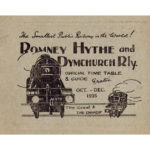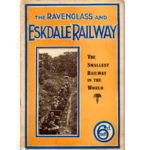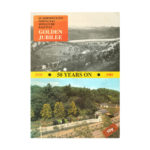Description
A man whom I have always admired and envied was Sir Arthur Percival Heywood, 3rd Baronet (25 December 1849 – 19 April 1916) who is best remembered today as the innovator of the fifteen inch gauge railway for estate use, later developed by others, (Henry Greenly, W. Basset Lowke and Capt. Howey for example) for tourist and pleasure use.
He was the eldest son of Sir Thomas Percival Heywood and grew up in the family home of Dove Leys at Denstone in Staffordshire
The family fortune originated in the Liverpool based African Slave Trade, diversifying into banking at Liverpool and Manchester and property development. ArthurS Grandfather sold Heywood’s bank in 1874 to a group which eventually became William Deacons, his sons devoting themselves to philanthropy and local political life. Arthur assisted his father in his hobby of ornamental metalwork, with a Holtzapffel lathe, and in his late teenage, built a 4 in gauge model railway with a steam locomotive. Wanting something on which his younger siblings could ride, he went on to build a 9in. gauge locomotive and train, which gave him the experience for his later ventures.
He was fortunate in that his parents did not stand in his way when he chose a career in mechanical engineering. Initially schooled at Eton, in 1868, he went on to Trinity College, Cambridge, where he made friends with the local railway people, cadging lifts on the footplates of locos. He graduated in 1872 with a master’s degree in Applied Science.
Arthur in 1872 married his cousin, Margaret Effie Sumner, and set up home at Duffield Bank, a property with extensive grounds in Derbyshire.
At the Duffield Bank Railway, Heywood developed what he called the “minimum gauge railway“. He settled on 15 in (381 mm) as the optimum, his previous 9 in, 29 mm) line having proved to be too small to carry people in a stable manner. Built on a steep hillside, the line was an ideal testing ground and, to gain the adhesion for steep gradients and the ability to negotiate small radius curves, he built six-coupled locomotives with what he called his “radiating axle.” He even built a restaurant car seating 8 persons, the kitchen fitted with a “Rippingille” oil stove and a Sleeping Carriage with berths for four. These may have been seen as whimsies but the sleeper came into its own when a crowded weekend of house guests caused the young Heywoods to be evicted from their rooms!
There was a very well equipped workshop capable of producing small castings and forgings, very little had to be bought apart from larger boilers. There were several skilled workmen employed
Though the line remained in use for many years, visited by many potential buyers, but the only commercial interest came from the Duke of Westminster for whom Heywood built the private Eaton Hall Railway.
The photographs are of particular interest no photographer is credited, but whoever it was displayed considerable artistic talent. Those views including young men draped languidly over the grass at the side of the railway would not have looked out of place in one of Manet’s “plein air” studies of Parisian scenes.




Reviews
There are no reviews yet.